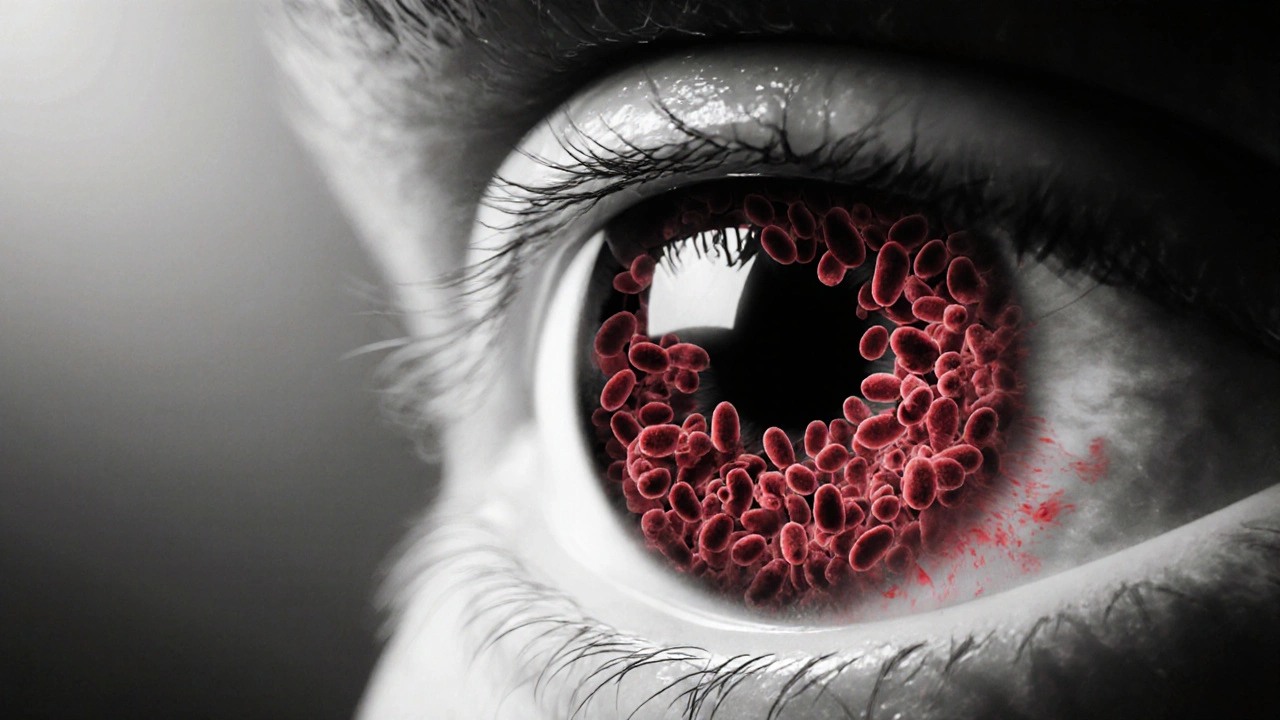
Gonorrhea and the Eye: Risks, Symptoms, and Treatment Guide
Learn what ocular gonorrhea is, who’s at risk, key symptoms, how doctors diagnose it, and the most effective treatment and prevention steps.
When dealing with ocular gonorrhea, a bacterial eye infection caused by the sexually transmitted bacterium Neisseria gonorrhoeae. Also known as gonococcal conjunctivitis, it can affect adults and newborns alike, leading to painful redness, swelling, and discharge.
Another key player is gonorrhea, a common sexually transmitted infection that may spread to the eyes through direct contact or during childbirth.
Relatedly, conjunctivitis, inflammation of the eye’s thin membrane, serves as the clinical backdrop for ocular gonorrhea, distinguishing it by the presence of gram‑negative intracellular diplococci. Recognizing this distinction speeds up diagnosis.
Effective care hinges on antibiotic treatment, systemic or topical therapy that eradicates Neisseria gonorrhoeae and prevents serious complications like corneal ulceration. Timely administration of ceftriaxone, often combined with azithromycin, is the standard of care.
Ocular gonorrhea encompasses bacterial conjunctivitis caused by Neisseria gonorrhoeae, so catching it early prevents scarring and vision loss. The infection requires prompt lab confirmation—usually a Gram stain or nucleic acid amplification test—and immediate treatment. Delays can lead to corneal perforation, which may need surgical intervention.
Prevention influences infection rates. Practicing safe sex, using condoms, and ensuring newborns receive prophylactic eye ointment at birth are proven strategies. Education about hand hygiene after genital contact also reduces the risk of accidental eye exposure.
Risk assessment is part of the management plan. Patients with a history of genital gonorrhea, multiple sexual partners, or recent unprotected intercourse should be screened for ocular involvement if they report eye symptoms. Healthcare providers must ask targeted questions to uncover hidden infections.
Follow‑up care is essential. After the initial antibiotic dose, a repeat ophthalmic exam confirms resolution. Persisting discharge or pain warrants re‑evaluation, as resistant strains of Neisseria gonorrhoeae are emerging worldwide. Culture‑guided therapy may become necessary.
Beyond the medical angle, emotional support helps patients cope with the stigma of STIs. Counseling and partner notification are integral components of comprehensive care. When partners are treated simultaneously, reinfection rates drop dramatically.
Below you’ll find a range of articles that dive deeper into related health topics— from cholesterol screening to antibiotic safety—offering practical tips you can apply right away. Keep reading to broaden your understanding of infection management and overall wellness.

Learn what ocular gonorrhea is, who’s at risk, key symptoms, how doctors diagnose it, and the most effective treatment and prevention steps.